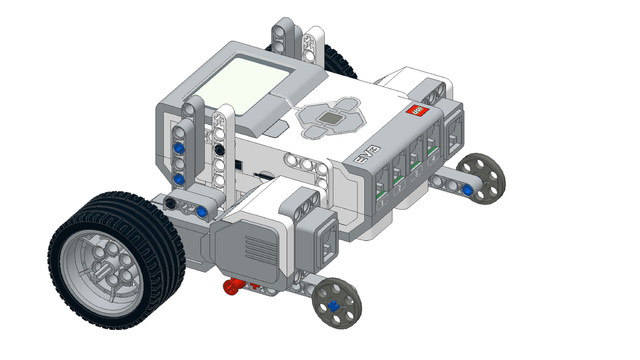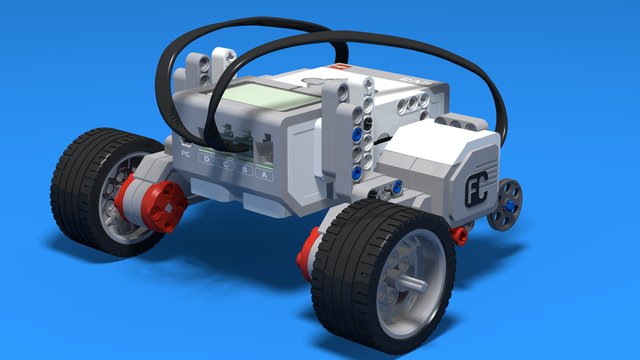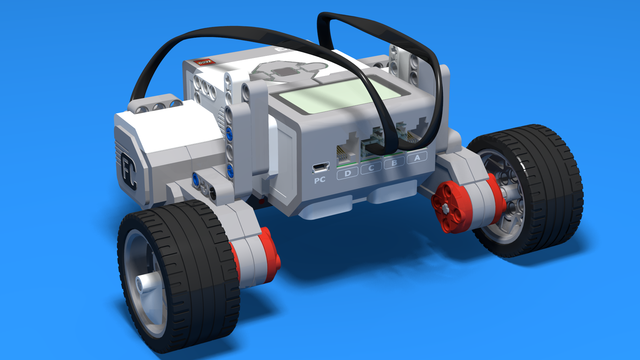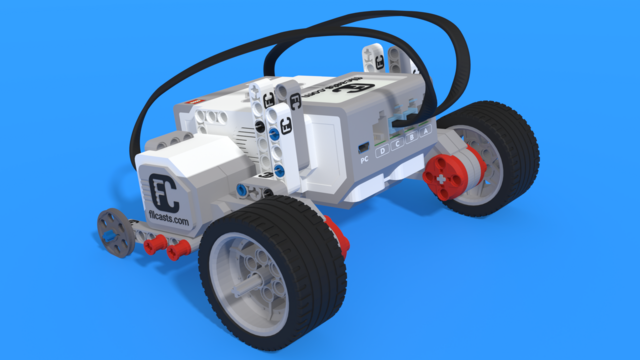There are some things to be careful about when your students work with the brick.
- #351
- 24 Jan 2017
- 4:45
Brick not starting
If the brick is not starting, check the battery springs.
Students will secretly play with the battery and they will return it badly in place, or can't put it at all.
Don't mention the battery at all
A teacher could forbid touching the battery. Anything forbidden is extra interesting for the students, so they will secretly try it out.
A teacher might demonstrate how to open and close the battery. That is а form of permission to students that they could do the same, and they will experiment.
A teacher might not mention the battery at all. Then, it will not exist for the students at all and most probably they will not touch it. With the exception of the most curious and the most bored among them. And then you will have to show them how to handle the battery properly.
Choose your approach to the battery in your groups and even if you have many groups, test all three approaches to see the results in your case. Share your results in the comments section below this Teacher's Note, especially if the results are different from our expectations here.
PC USB port
USB ports break after about a year of intensive work, so you should better use Bluetooth when possible.
Daisy-Chain mode
The USB to the left of the brick is used for Daisy-Chain mode - brick to brick communication
English
A teacher note for the brick. When using the brick with a group of students there are some important things that you should be aware of and you should be careful. So, let's stop at some of them.
The first thing is the battery. And we have the battery. This battery comes from Lego and you can remove this battery, you can place it into another brick if you need to. You can charge this battery, you can see the input for the charger right here. And when you're in a group of students, probably some of the students will be curious enough to open the battery and then they'll try to close it. Now, what's important is that when students are closing, sometimes, not very often, but we've seen this, they could bend the springs. And if they bend the springs, probably you won't have good contact between the battery and the brick. And from there the brick won't work. So, it's important to be careful in the group. Now, there are different strategies. First, you can just tell all the students. You know your students. Because these videos are watched from people from all over the world. And there are different approaches to the students. You know your students. So, you can just tell them 'Okay, this here is the battery and please don't open the battery because it might brake because there's a spring inside that could bend'. That's one approach. Another approach,of course, probably we prefer the second approach more is to just don't mention the battery at this stage of the course, don't tell them that you can open it and then you can close it because then they'll start experimenting. And this form of describing is some kind form of allowance and they'll start experimenting and first you lose a few minutes in the class and then you risk some of the springs to bend. And, again, it's your approach but I'd recommend the second one. For this stage of the course don't mention the battery. But just be careful if some of the students open the battery and try to be with them and to help them close the battery. Second note is about the port for connecting the brick to the PC. Now, you take the USB cable, you connect one end of the USB cable to the brick and the other end to the computer. Then the students write the program and download it. Then they remove the cable, place the robot on the floor and start the program. Then they return back to the computer, connect again, then disconnect, then connect again, then disconnect. And it's common to do these things like 100 times in a class. And because these are students they might not be careful a few times and they could break the port. And we have about 5-10% of our bricks that already have this port broken because of this constant connecting and disconnecting of the USB cable. If you're in a group of students always try to use the wireless connection, the Bluetooth connection between the brick and the computer. And in some of the next videos we'll stop at exactly how do you configure this wireless connection and how to use it. And there are some very nice tricks you can do there to make it easier to work with Bluetooth connection in a group. You can also see that the intelligent brick from Lego Mindstorms has another USB port on the left side of the brick. This is your left side of the brick. And you can use this port to connect two bricks together and the term is 'daisy chain'. So, you add one end of the USB to one of the bricks and the another end to another brick and then both bricks can communicate with this. And again we'll stop in some of the next modules of how exactly do you use this functionality.
Courses and lessons with this Tutorial
This Tutorial is used in the following courses and lessons

EV3 Phi. Introduction to robotics with LEGO Mindstorms
The things that you will be able to do with your EV3 robot by the end of this course are:
Freely move your robot towards desired target;
Avoid obstacles on the path of your robot using sensors;
Follow lines of any shape;
Detecting and picking up objects of any kind;
- 92
- 220:20
- 36

Parts, components and notes about LEGO robot constructions
Overview of what is going to happen in module 3
- 7
- 0
- 1
- 3d_rotation 0

Level A1. Introduction. Robotics with LEGO
Introduction to robotics - The first level of the Robotics with LEGO curriculum for students in second, third or fourth grades. A journey in space, with robots. Various constructions with robots are built. Learn how to control the motors so that the robot navigates around the Sun, the Moon and Earth in various ways. Getting to know the first of the sensors. The robot can feel its surroundings with the help of the Touch sensor and avoid obstacles.
- 142
- 133:42
- 187

Correction and finalizing the construction
We will demonstrate the common mistakes students make when building a robot.
- 7
- 0
- 6
- 3d_rotation 0

Robotics with LEGO - Level 1.0 - Adventure in Space
The first level of the Robotics with LEGO curriculum for students in fifth to twelfth grades.
Various constructions with robots are built. Learn how to control the motors so that the robot navigates around the Moon and Earth in various ways. Getting to know the first two sensors. The robot can feel its surroundings with the help of the Touch sensor and avoid obstacles.
The Ultrasonic distance sensor can help the robot avoid obstacles. Students work with concepts like loop, degrees and medium motor. Robots can now do two different actions at the same time - while solving missions on a field, the third motor clears detected obstacles.
- 126
- 123:52
- 150

Коригиране и довършване на конструкцията
We will demonstrate the common mistakes students make when building a robot.
- 7
- 0
- 6
- 3d_rotation 0
![Image for [In Development] The fun level - Game-oriented introduction to LEGO robotics](https://d2nmr6p48f8xwg.cloudfront.net/content_pictures/pictures/000/002/636/a4f229bae5979562f6bfe32adc6281e577e312674a0cc5c98f8fdfe15e7c7da9b89f826a037575a5LEGO-Mindstorms-Ev3-Yolanda-Sailship-Robot-Fllcasts.png)
[In Development] The fun level - Game-oriented introduction to LEGO robotics
A level, designed for introduction in LEGO-robotics, focused mostly on games. We use goal-oriented challenges to make the students want to accomplish a certain task, learning a lot in the process. Some of the games we have included here are football, bowling, paper-plane competition and many more. It is suitable for studens 8 to 12 years old, but even older students will have a lot of fun with the activities.
This is a brand new course that we are experimenting with in a groups in June 2019. Keep in mind that it is possible to use it for summer camps and groups, but there are a few lessons that will be improved on the fly.
- 38
- 42:14
- 40

Lesson 1 - Introduction
Introduction
Today the robot we are building is a spaceship once again. The aim for today, however, is exact - to reach the further (dark) side of the moon!
Where is located the dark side? Why is it so hard to be reached? Why is it called "dark"?
- 23
- 3
- 15
- 3d_rotation 1